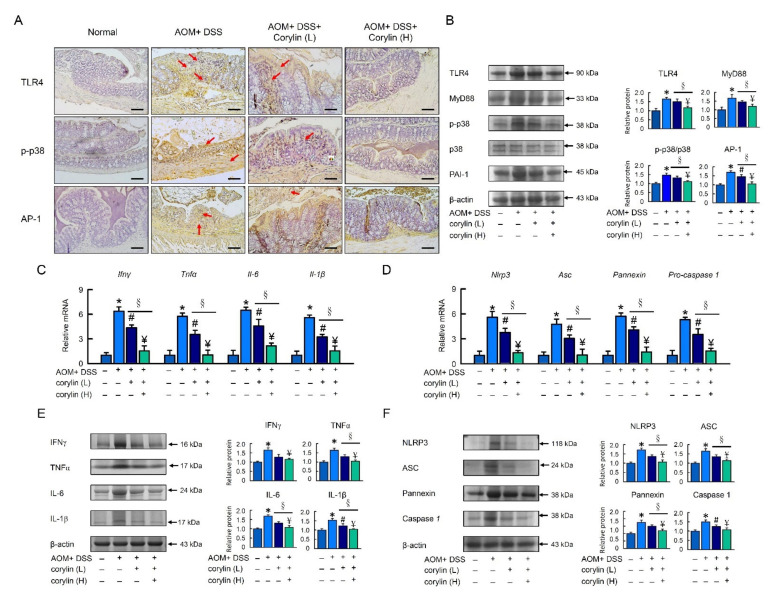Figure 6.
Corylin improves the TLR4 signaling pathway in AOM/DSS-induced-colitis-associated colorectal cancer mice. (A) Expression analysis by immunohistochemical staining of TLR4, p-p38, and AP-1 in mice after the indicated treatment. Scale bar: 100 μm. (B) Western blot analysis of TLR4, MyD88, p-p38, AP-1, and β-actin (loading control) in colon. (C,D) mRNA expression of Ifnγ, Tnf-α, Il-6, Il-1β, Nlrp3, Asc, Pannexin, and Pro-caspase 1 as determined by qRT-PCR. (E,F) Western blot analysis of IFNγ, TNF-α, IL-6, IL-1β, NLRP3, ASC, Pannexin, and Caspase 1, and β-actin (loading control) in colon homogenates. Results represent mean ± SEM. * p < 0.05, Normal compared with AOM/DSS; # p < 0.05, AOM/DSS compared with AOM/DSS + Corylin (L); ¥ p < 0.05, AOM/DSS compared with AOM/DSS + Corylin (H); § p < 0.05, DSS + Corylin (L) compared with DSS + Corylin (H). AOM, azoxymethane; DSS, dextran sodium sulfate; TLR4, Toll-like receptor 4; MyD88, myeloid differentiation primary response 88; AP-1, activator protein 1; Ifnγ, interferon gamma; Tnf-α, tumor necrosis factor-α; Il-6, interleukin-6; Nlrp3, NACHT, LRR, and PYD domains-containing protein 3.

